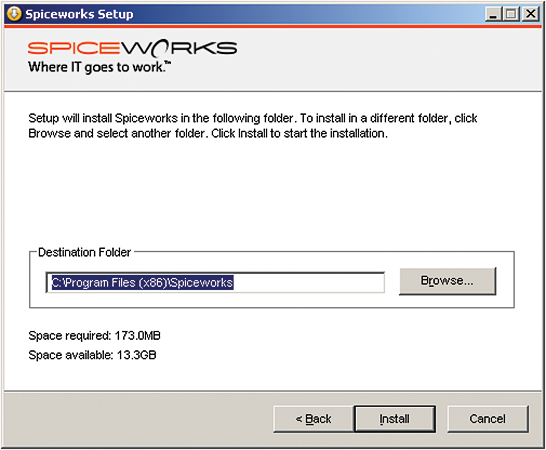

And then 15 to 20 Windows workstations, all joined to the domain. Another is an all in one, copier, fax, scanner that is IP capable. One of which is a single server that serves as a domain controller and file server. Next up is a dumb switch with a single flat VLAN and 24 ports going out to the Nodes. The Internet is connected via the WAN port of one lousy, home based wireless router, that should not be used for a business, but is.

#INSTALL SPICEWORKS ON HOSTED SERVER FULL#
I’m using this set up because in the area that I live in, and for small offices with no full time IT person, it’s a common setup.

Let’s talk about the environment that we’ll use in our example. But you’ll catch on to why that’s not so bad. Like anything in IT, there are lots of different ways to do it, but this one works for me, and if you’ve never set it up before, it gets you from zero to seventy five in, well, about twelve hours or so of scanning time. I decided to make this tutorial on how I set up Spiceworks. I’ve used it for a few years now, and it keeps getting better. So for me, discovering Spiceworks was pretty nice. But the cost for those prohibitive to the small network administrator that has to monitor less than fifty devices and has a budget that makes buying a five hundred dollar computer a major purchase that management groans loudly about. Lots of commercial products are pretty easy to use. Some of the open source stuff was hard to set up, hard to configure, and time consuming. I’ve used lots of network monitoring tools over the years. ATTENTION: Spiceworks has significantly changed since this posting and this will not be the best post for the most current information.


 0 kommentar(er)
0 kommentar(er)
